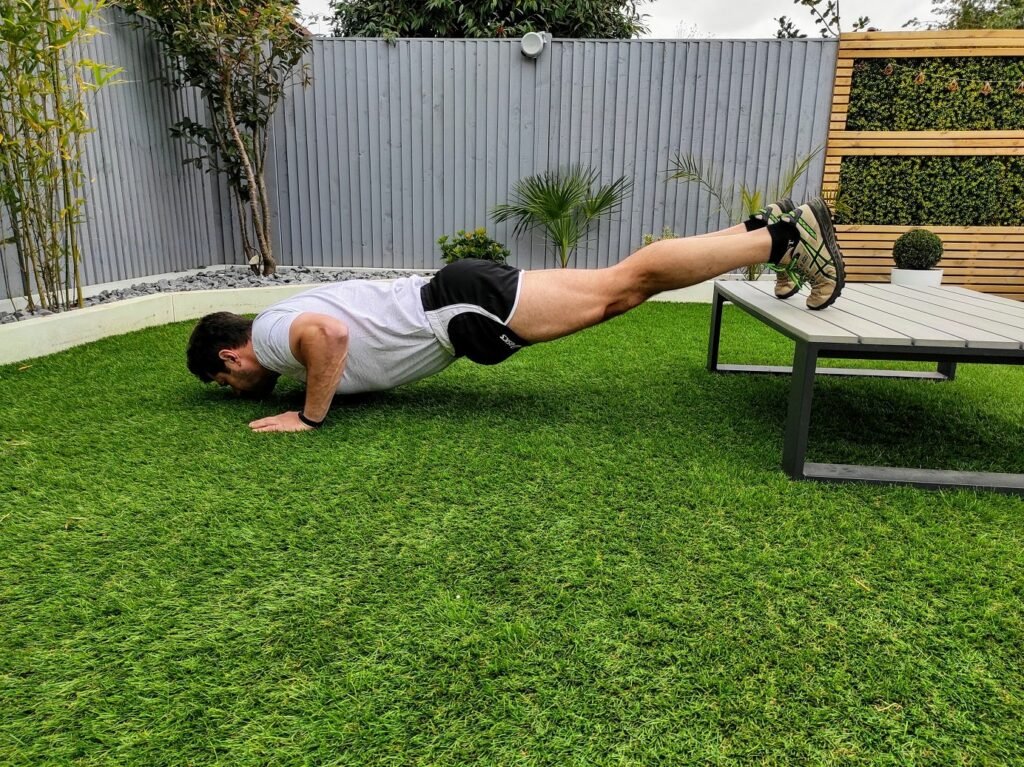Hill-Sachs and Bankart lesions are both shoulder injuries that occur after the humerus either partially or entirely luxates. This causes damage to the structures in the shoulder joint which can either be rehabilitated with physiotherapy or in severe cases with the help of surgery. Depending on the damaged structures it’s either called a Hill-Sachs or a Bankart Lesion.
In this article, I’ll break down the commonalities and the differences between the Hill-Sachs and the Bankart Lesion.
Let’s dive right in.
1. Shoulder Anatomy: A Quick Overview
Before we dive into Hill-Sachs and Bankart lesions, let’s get familiar with the anatomy of the shoulder joint. The shoulder is composed of three bones: the humerus (upper arm bone), the scapula (the shoulder blade), and the clavicle (collarbone). The head of the humerus fits into a socket on the scapula called the glenoid fossa. The technical term for the shoulder joint is, therefore, the “glenohumeral joint”.
Structures like ligaments, muscles, bursae, and labrums help hold your shoulder in place and stabilize it. Each of these structures has specific functions:
- Ligaments are stiff tissues that prevent and limit extreme movements
- Muscles, and then specifically the rotator cuff muscles (subscapularis, supraspinatus, infraspinatus, and teres minor), help to centralize the humerus on the glenoid during movement providing stability
- Bursae are cushions that prevent friction between structures
- Labrums are edges of cartilage which in the case of the glenohumeral joint encircle the glenoid fossa and add stability
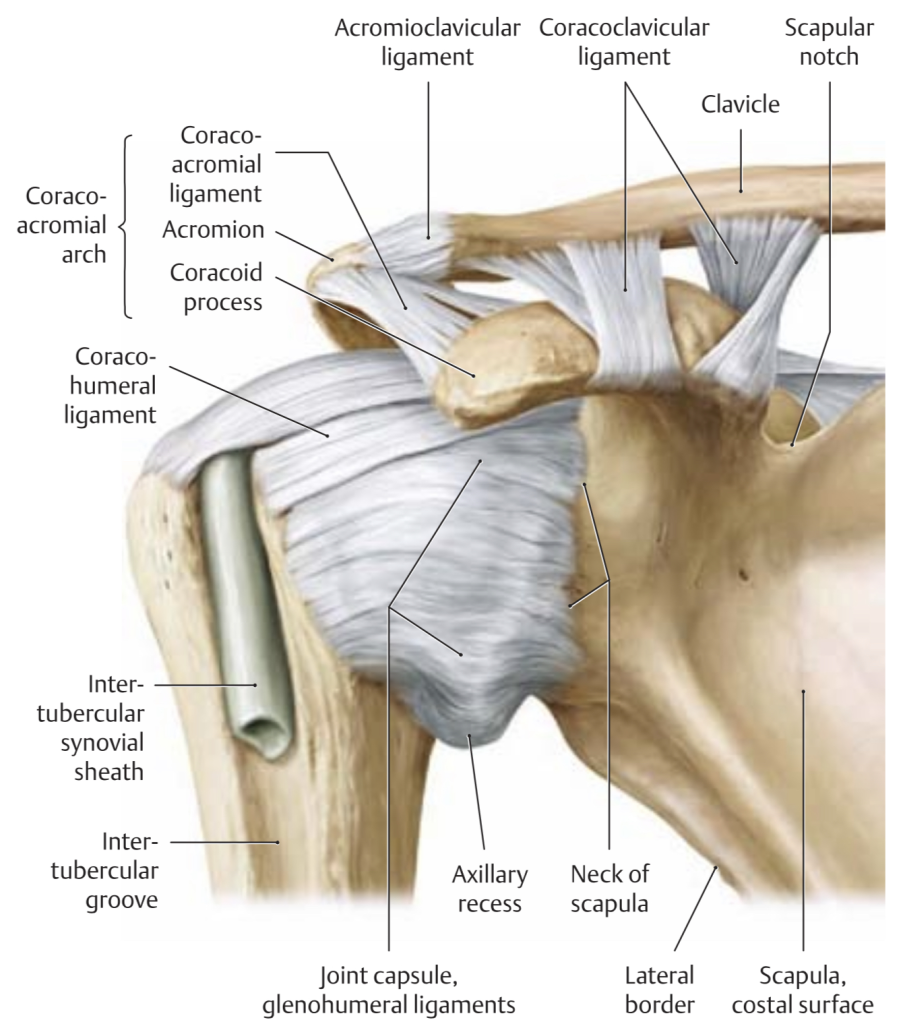
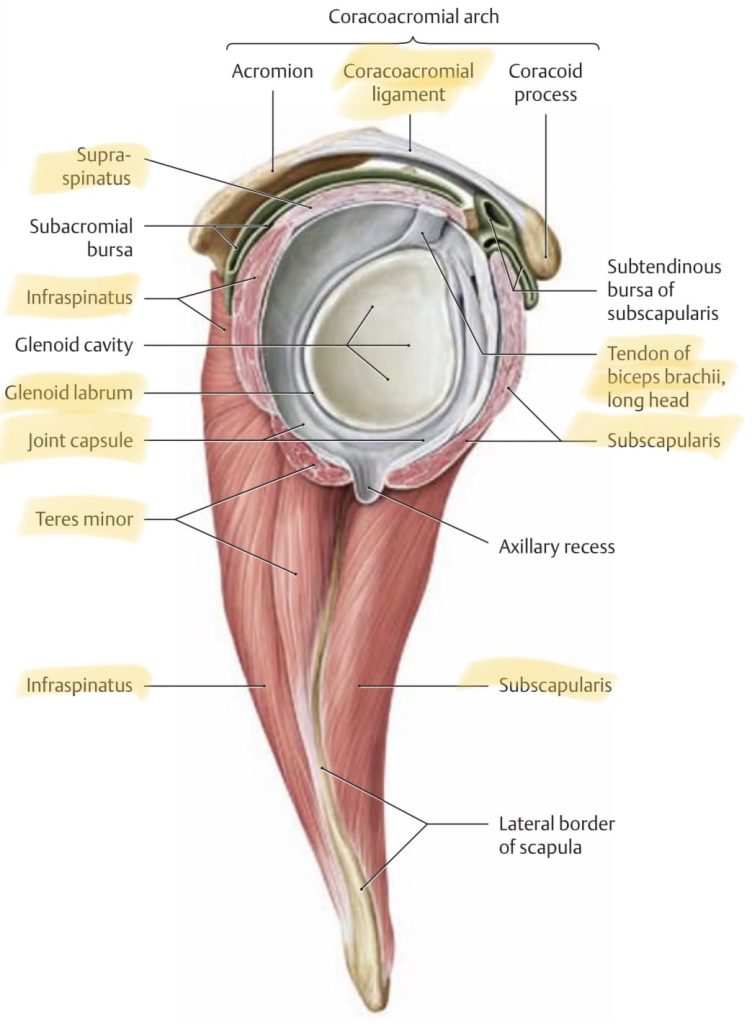
2. What is a Hill-Sachs Lesion?
The Hill-Sachs Lesion is named after two orthopedic surgeons who first described this lesion in 1955. Hill-Sachs lesions occur when there is an impact between the head of the humerus (the upper arm bone) and the glenoid (shoulder socket). This type of injury most commonly occurs during falls or accidents where the arm gets “caught” or pressed against a wall or other hard surface. The result is a dent in the head of the humerus.
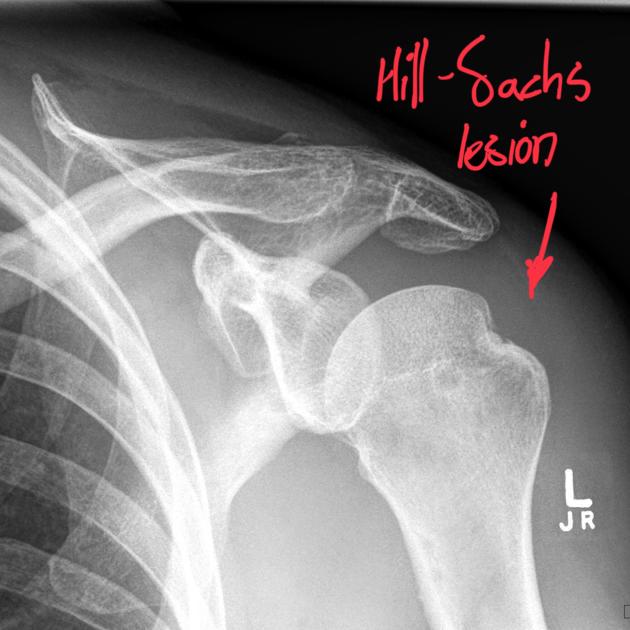
Right after the injury, this will result in a loss of mobility and pain while lifting the shoulder overhead. The preferred treatment approach after a Hill-Sachs lesion is physiotherapy. Since it’s a bone injury you must consider the healing times of bony tissue. Which starts in the first 6 weeks after the accident during which the bone will consolidate. At this time, it’s important to move within a pain-free range of motion to give the tissue time to heal. After that, a progressive loading plan will recover your shoulder mobility, stability, and strength. This will also ensure optimal bone healing and will instruct your brain and body know how to compensate for the lack of surface perceived on the head of the humerus.
3. What is a Bankart Lesion?
A Bankart lesion is similar to a Hill-Sachs lesion except that it’s located on different parts of the shoulder joint—in this case, the labrum. A Bankart lesion occurs when an impact between the head of the humerus and the glenoid cavity causes damage to the labrum cartilage. Symptoms include pain during movement and instability in the shoulder joint, which can make it difficult to lift your arms above your shoulders or perform activities that require you to reach your arms overhead, such as climbing.
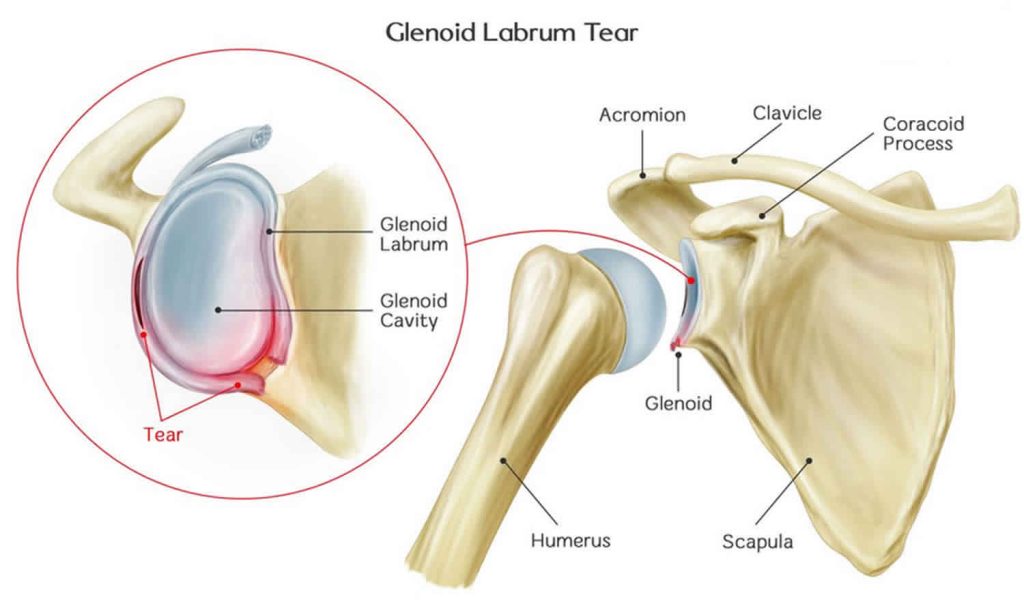
Just like with Hill-Sachs Lesions after a Bankart Lesion physiotherapy is the first line of treatment. In most cases, the labrum doesn’t heal and there’ll be a part of it that is less stable. Yet, you can perfectly compensate for this lack of passive stability by training your shoulder stabilizers.
In severe cases, a part of your labrum might have disconnected from the glenoid causing it to block normal joint function in the shoulder. If this is your situation, surgery might be indicated if there is no chance of improving it conservatively.
4. Conclusion
Hill-Sachs and Bankart Lesions are both injuries of the shoulder joint where the former damages the head of the humerus and the latter the labrum. Both can result in instability of the shoulder joint, and both can usually be treated well and conservatively. Depending on the severity of the injuries a complete recovery might take you anywhere from 6-12 months.
I think it’s particularly important to focus on developing great awareness of how your shoulder girdle moves. The better you can control the muscles that stabilize the scapula the better you can position it. This will ensure greater stability and more efficient joint motion.
Even better than learning these skills during rehab is to do so before you suffer a shoulder injury. Thus, warm up properly before rock climbing, do shoulder stability exercises like shoulder external rotation, pronated A-W-T-Y-I’s, and Kettlebell Windmills regularly, and an antagonist training plan will help you to achieve this goal. The better you invest time in these workouts the more time you can invest in rock climbing injury-free.

